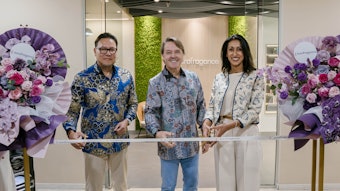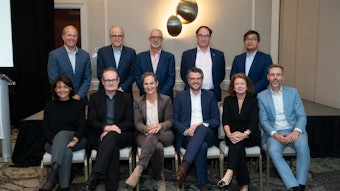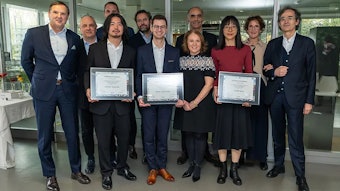Norman Bourlag—agronomist, Nobel laureate and founder of the “green revolution”—has spent the last decade and more imploring the world to take a clear-eyed view of agricultural productivity, particularly as it relates to organics. (Read an in-depth talk with Bourlag at reason.com) While he doesn’t deplore organic farming, Bourlag does stress that the mechanics of such a growing system can have unintended, ecologically disastrous effects. For instance, he estimates that all of the available organic manure in the world could help feed just about 4 billion people. In addition, clearing lands for organic and natural crops and nitrogen-bearing livestock could potentially decimate already threatened forests.
Yet Bourlag’s points are far from common knowledge among consumers and even some manufacturers. The result is that the consumer continues to demand “safer and greener” organic products, customer companies place high value on launching organic lines, and the flavor and fragrance industry labors to manage and meet the demand. Is this sustainable?
Such was the tone of Firmenich global sustainable development director Boet Brinkgreve’s nuanced presentation before Centifolia's 7th International Congress on perfumery and natural raw materials. “We want to make sure the next generation has what we have now,” he said.
Brinkgreve noted perhaps the direct aspect of sustainability for all industries: the booming world population. “It’s only getting worse,” he said. Referring to a graph, he explained, “In 2050, there will be almost 10 billion people. The issue is that the less-developed countries are growing the most. For that reason, there will probably not be enough to eat. I think that’s a real sustainability issue. We can talk about luxury products, but not being able to eat is [obviously] worse.” The food-scarcity issue, he continued, will increase pressure on ecosystems, which is bad news for the flavor and fragrance industry because, in the larger balance, essential oil-bearing crops will always lose out to food crops. “We have to find solutions for this above anything else.”
But how do consumers view sustainability, and what do they want? Brinkgreve outlined three tiers of consumer priorities:
- Tier 1, self: What’s in it for me? How can I protect my overall health and well-being? How can I have a clear environmental and social conscience?
- Tier 2, loved ones: How can I make sure my family is protected?
- Tier 3, global: What can we do for the rest of the world?
But how can the industry deliver on the promise of sustainable naturals that deliver on consumer expectations but which also adhere to the world’s ecological realities? “It’s clear that you can only do this through technical and scientific solutions,” said Brinkgreve, “delivering on naturals and reducing the environmental impact. Nature itself is not going to help us. We need technology.” With this in mind, Brinkgreve presented three pillars of sustainability: ecology, society and economy.
Eyes Wide Open Ecology
“Everyone says that agriculture and naturals [are] the solution for the [ecological] issues in the world,” said Brinkgreve. “I think it’s partly true.” He reminded the audience of forestry and agriculture’s prominent role in global CO2 emissions. With that in mind, Brinkgreve asked, “Are naturals really the answer? Or are artificial molecules maybe better for creating fragrances? I understand that we want naturals and the consumer wants naturals, but we should not forget that technology can help us there and [with] the [ecological] impact we are going to have by selling more natural fragrances. I’m not saying we should [stop using naturals], but we should be concerned.”
The exploitation of land in the quest for botanical resources has had stark consequences, as with the deforestation of Borneo (see Projected deforestation in Borneo) and Indonesia. “I’ve just come back from Indonesia where I saw how people burned down the rainforests with petrol just to get a little bit of palm oil,” said Brinkgreve. “I think we need to be more conscious of what we do there. There is less land available and [thus] more pressure on it. Quality will also be impacted. We ask too much of the earth.”
“Pesticides are a problem as well,” he continued, “and so we say we want organic. There are no pesticides, so it’s good. But I ask myself: are organics the solution?” Here Brinkgreve cited Bourland’s skepticism of organic farming’s promise, adding that he has witnessed the detection of pesticides in organic products. “Can we really say that we’ll go to organics for our natural fragrances and cosmetics? Organics are one of the few things that consumers understand. However, it probably makes more sense to talk about a more holistic certification of naturals, which cover far more things than just the environmental impact of using pesticides.”
This holistic solution, which in Brinkgreve’s opinion would factor in all impacts of a material, would work in tandem with a call to local populations to cease deforestation. Meanwhile, in cases in which it made sense, the industry could employ greener synthetics to spare natural resources.
“Treat the soil right and make sure you can get the right quality [crops],” he said. “We should exchange distillation and extraction technology to get the most out of the land and use new methods of chemistry so that … we get the most out of the biomass.”
Sociological Ethics
The societal impact of the naturals trade is something overlooked by many, noted Brinkgreve. Yet he views it as a key pillar of sustainability. Unstable societies will invariably net unstable supply streams. “Most of our suppliers, especially in the southern hemisphere, are living below the poverty line,” he explained. “The average lifespan of our suppliers is below 45 years.” The main threats, he said, include malaria, limited access to clean drinking water and critical nutrition, and insufficient financial means to purchase medicines. In addition, there is little education, and the labor-intensive nature of disadvantaged farming means that children may be exploited for production. “It’s shocking to see,” said Brinkgreve. “Our products are used for luxury.”
He outlined some efforts with which he had firsthand knowledge, including partnering with NGOs such as the Bill & Melinda Gates Foundation, providing microfinancing to women in Ugandan vanilla farming communities, ISO certifying another Ugandan farm, helping local communities diversify crop and livestock production to more easily weather bad times, and enacting a technology exchange program to boost yield and quality per hectare.
Ethical Optimization of Value Chains
The final pillar of Brinkgreve’s sustainability outlook is one which no industry can exist without: economics. To illustrate, he displayed the value chain for patchouli, which involves some 60,000 farmers, most of whom are buried beneath many layers of traders and other middlemen.
“I’ll never forget a meeting I had about a year ago with one of the biggest patchouli traders in the world. He had two Rolexes and a diamond ring the size of a golf ball. He said to me, ‘You really have to pay me this price because these farmers are so poor—they need to have more money.’ They make the money off the backs of the poor farmers.”
The result, which he displayed on a chart, has been the exaggeratedly inverse fates of patchouli availability and pricing, as seen in 1997 and 2008. Meanwhile, those farmers that haven’t made sufficient profits have allowed their land and equipment to erode. “This,” he said, “is because of the traders.
“We think most farmers don’t know what the market cost of their products should be,” Brinkgreve continued. “Because they don’t know the [proper] cost, they price at or below cost. We should help them to find the fair price—and don’t confuse this with [fair trade]. Because there you see people flying business class to the other side of the world to certify farmers that live on less than a dollar a day.”
Finally, he encouraged the institution of long-term commitments with local growers, rather than hopping from trader to trader for the “best deal of the day.” “If you really want to improve something, you have to have a long-term commitment to your supplier,” Brinkgreve stressed. “We all have the obligation to work on a solid price calculation—don’t start shortcutting each other to go under the price.” The benefits, he said, include stable pricing, a shortened supply chain and farmers making reasonable profits.
In closing, Brinkgreve discussed his company’s sustainability index, which sets benchmarks based on the fulfillment of all three pillars. In lieu of the current environment of competing sustainability marketing claims, he encouraged a standardized, transparent system. “We [as an industry] need to have the same way of measuring these things.”
Read part two of our Centifolia highlight coverage in the March issue; www.perfumerflavorist.com/subscribe.










